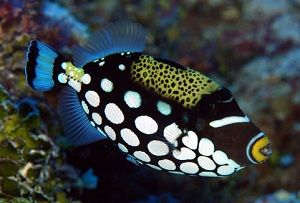Ostrationids, Chest Fish

Ostrationids, also known as box fish , are marine fish that are named for their morphology: they have bony plates that cover their entire body and head, giving the sensation of «a chest».
They lack ventral fins, swim quite poorly and are not very skilled , so they do not like competition for food.
They originate in the tropical regions of the globe: the Red Sea, the Indian and Pacific Oceans , in habitats rich in algae and sponges, with a depth between 3 and 30 meters.
If they are sick or feel scared, they are capable of generating through their skin, a toxic substance that can be harmful,causing the indisposition in the rest of the inhabitants of the aquarium.
They should be kept in aquariums, which have at least 300 liters of capacity, to avoid problems for other tenants.
They are delicate fish, susceptible to contracting various parasitic diseases.
They are not difficult to feed, they admit pieces of fish, mussels, tubifex, prawns and all kinds of live or frozen crustaceans.
In the aquarium, they are quite aggressive among their congeners, not so with the rest of the species.
They also have problems in an invertebrate aquarium , as they fear contact with the tentacles of anemones.
Some of the most representative species of Ostracionidae are:
Cow Fish
Lactoria cornuta
This fish, native to the Indian and Pacific Oceans, is relatively easy to acclimate to a small aquarium, for its size, about 40 centimeters.
It is a fish with a truly strange and original shape, it owes its name to the presence of two bumps on the forehead, which give the sensation of being the horns of a cow.
They are not fast fish, nor are they good swimmers (like all species), so they do not like to compete for food.
As young, they are usually gregarious, but as they develop and enter adulthood, they like to live in solitude.
They are omnivores, they eat almost anything we can offer them.
See: Cow Fish

Spotted boxfish
Ostracion cubicus
This is a less original fish than the cow fish, but certainly more attractive. On the contrary, it is more difficult to adapt to the aquarium, although once achieved, it will gladly accept any food that is provided.
It is aggressive with other fish of the same species, not so with the rest of the aquarium fish.
In nature it is easy to find specimens of about 45 centimeters long, although in the aquarium they do not usually exceed 35 centimeters.
To keep a spotted boxfish, we need an aquarium of about 500 liters.
Painted box fish
Ostracion meleagris
Within the Ostracionidos, it is without a doubt the most striking of all. It comes from the coral reefs of the warm seas.
They are easy to breed in the aquarium, accepting a wide variety of foods: crustaceans, algae, raw or cooked mussels and artificial prepared foods.
Its striking color varies depending on whether we are facing a male or a female. The males have orange spots on the sides, while in the females the spots are white.
Like the spotted boxfish, they are aggressive towards the same species, except between pairs.





